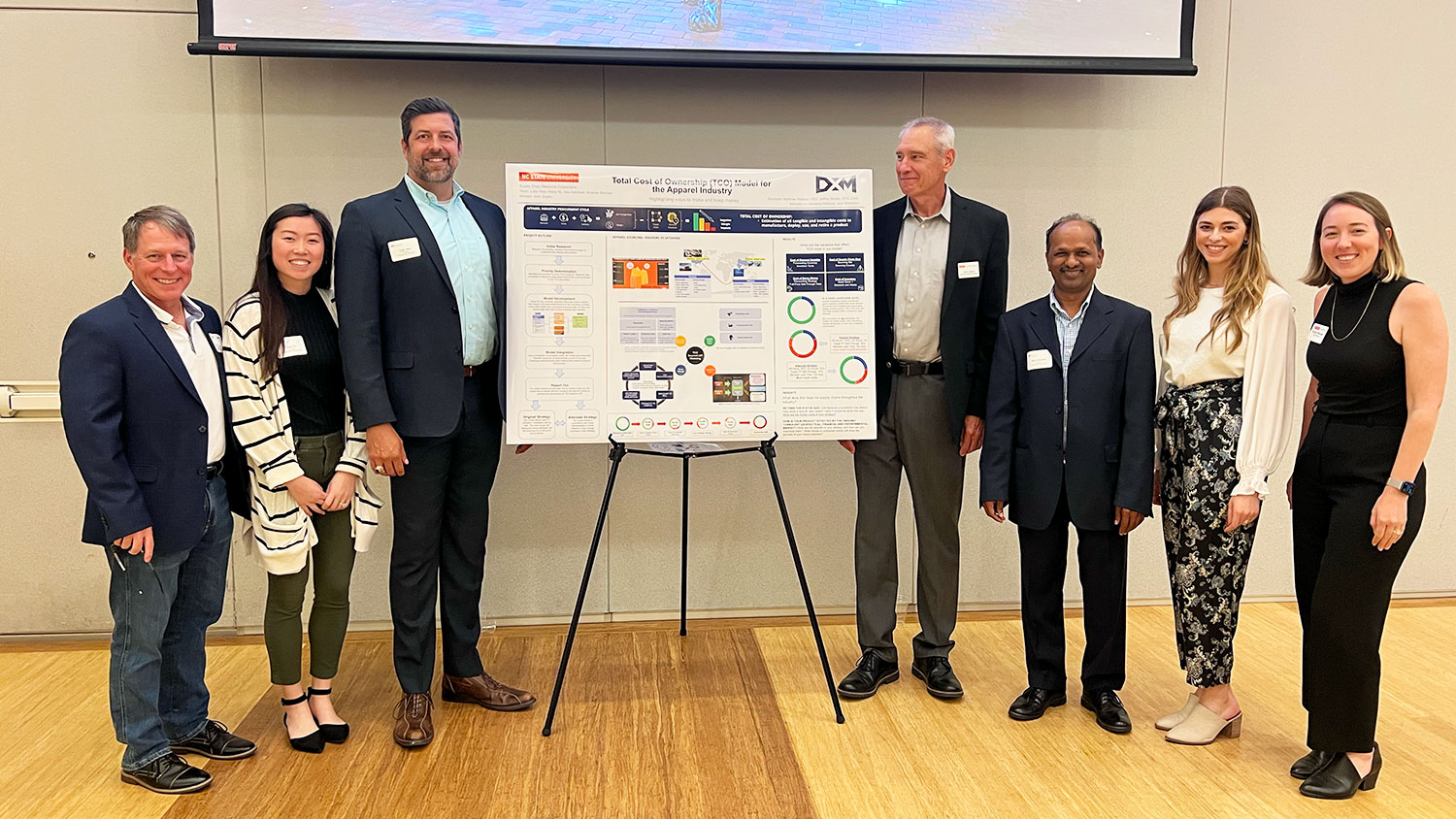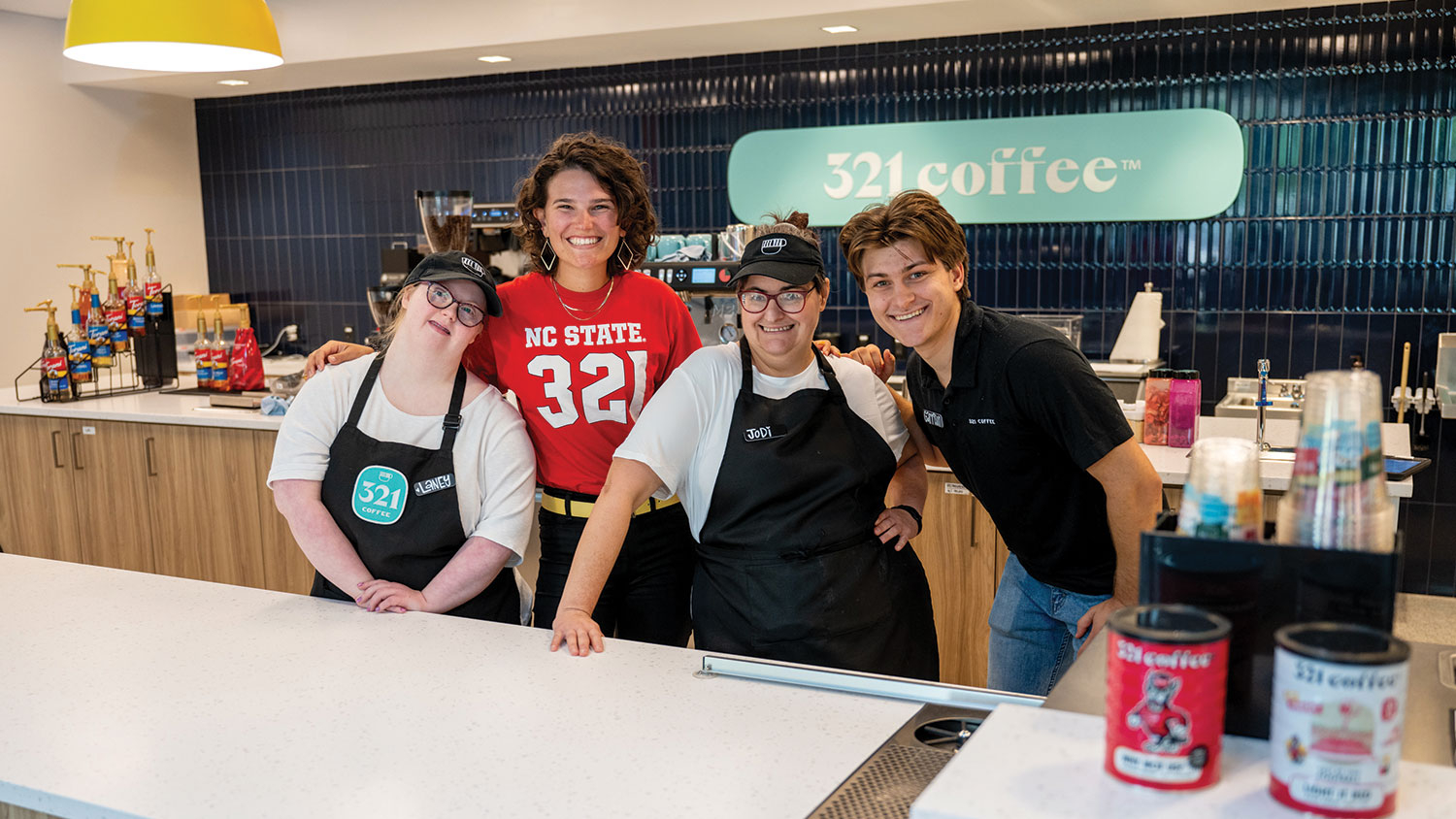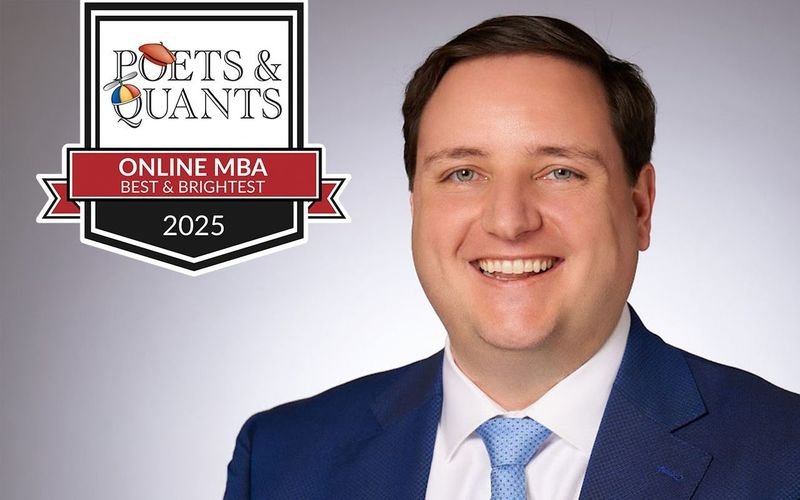Supply Chain Resource Cooperative Shines a Light on Student Innovation
After completing a semester-long practicum, Poole College students showcase their innovative solutions to real-world problems at the annual SCRC Gallery Walk.

By Jess Clarke
As a Jenkins MBA student, Kristina Warnaar learned how to talk the talk. A semester-long practicum through the Poole College Supply Chain Resource Cooperative (SCRC) challenged her to walk the walk.
Warnaar applied her MBA knowledge at the annual SCRC Gallery Walk this spring, the culmination of the practicum, at which her team gave a brief pitch and later explained their project more in depth to business leaders.
One reason Warnaar left her engineering position in the building industry to pursue an MBA degree was the options a business career provided to advance sustainability. The practicum gave her the chance to dive into one such opportunity — with impactful results — before she even finished the program.
Her practicum team was immersed in a project with their client company, DXM, and “our challenge was to communicate intangible costs of certain strategies, and sustainability was inherent in that,” she says.
Not only did Warnaar learn about an industry unfamiliar to her — apparel — she developed skills to help her stand out in her new career: teamwork, leading meetings, making presentations and communicating with company leaders.
“What was most valuable was working with such an engaging client and developing something they were proud to use, and learning how to develop something with my teammates,” she says. “I found it really valuable to listen to what the client wanted and to the ideas of my team. Diverse thinking makes models better, incorporating different viewpoints into the final product.”
Innovative Solutions to Real-World Problems
At the gallery walk, Warnaar’s team presented the final product to leaders of DXM and other companies that partnered with Poole graduate and undergraduate students on diverse projects. The event is one way the SCRC brings together students, faculty thought leaders and industry partners to research and tackle real-world business problems with innovative solutions.
For Warnaar’s project, DXM representatives asked the team to research a chronic challenge in the apparel industry: quantifying how costs of different onshore and offshore manufacturing strategies affect profits. DXM wanted a model to show its clients the cost benefits of the company’s onshore options. DXM provides a technology platform that connects the consumer to commerce with advanced manufacturing for the apparel industry.
The project presented an effective way for Warnaar to learn more about sustainability in business, meet one of her objectives in pursuing an MBA degree, and prepare for her new career.
“I’m very passionate about sustainability, and the construction industry is a bit lagging in that,” she says. “I wanted to play a bigger role in it and felt I needed some skills — communication, leadership and knowledge of different business fields — to give myself a better view of the overall picture.”
Warnaar’s team gave DXM a view of the overall picture by researching a range of supply chain risks and quantifying the variables and intangible costs for the apparel industry. Sustainability is becoming more of a focus with apparel manufacturers, which traditionally have done most sourcing overseas, she notes.
“The solution we communicated through our model was that … with even a small change of strategy, doing 98 percent offshore and two percent onshore, you can become that much better at listening to what a consumer actually wants and saving money at the same time. If you look at sourcing closer to home, it can save you money and be better for your brand,” Warnaar says. “Sustainability does not have to mean extra costs.”
A Win-Win for All Involved
SCRC initiatives such as the gallery walk have a broad, long-lasting impact by giving students and industry leaders an opportunity to network with a variety of companies to discuss common supply chain and other business problems and solutions.
The results? Setting up students for success, supply chain improvements and positioning companies to be more competitive.
Warnaar’s team provided a vital, versatile tool for DXM as it grows its business.
The students’ model “has a set of inputs that can be used to tailor the model’s outputs to the specifics of each customer’s product set and current strategy,” says John Zapko, an SCRC executive practicum advisor who worked with Warnaar’s team. “Because of this, DXM will have a tool to enable the discussion about what are the total costs and their effect on profitability of each and any scenario the customer could request or DXM could propose.”
Analytics software provider SAS also participated in the SCRC practicum by partnering with a team of Poole undergraduates and their SCRC advisor. The team’s project was to assess SAS’s distribution of IT peripherals — headsets, computer mice, keyboards — to employees, given the changes Covid-19 generated with remote and hybrid work. The students’ research would help SAS evaluate its approach in the context of current industry practices.
The students’ findings were revealing.
“No one’s really come to the perfect solution yet. It’s still evolving,” says Carol Kozar, a SAS procurement executive and SCRC executive advisor. “The students’ research made us feel like we’re not alone or behind. We’re trying to figure out things just like other companies are … It gave us the confidence that we were on the right track.”
The gallery walk and poster presentations showed that students were on the right track with their career preparation. And as an example of the hands-on, high-impact opportunities the SCRC provides, those experiences are a potential pipeline for employees and interns for the cooperative’s business partners.
Warnaar’s team consisted of four students with different skills and backgrounds. But they “quickly developed a unified team approach to every aspect of the project and continued to improve on and benefit from that approach,” Zapko says. “It seemed as though every interaction, presentation, output and deliverable was a team collaboration. It is rare to see such complete and successful teaming from start to finish, and the benefits of that success were outstanding.”
For the SAS project, students met with SAS teams and technical partners to gain perspective, and their fresh, unbiased approach was key.
“Ultimately, the result was that they came back with a professional, mature, well-thought-out presentation. It’s something I would expect from team workers here at SAS. It actually exceeded our expectation when it came to their final presentation,” Kozar says.
For the DXM project, Warnaar had plenty of opportunities — and motivation — to polish her leadership and presentation skills. Her team met each week with DXM leaders to give progress updates and also made formal presentations of their work a few times. “This was a really unique project because we worked directly with C-suite executives of the company,” she says, including the CFO/CAO, who managed the project.
Return on Investment
For some students, the return on investment in their project was quick. One student will be an intern at SAS this summer. Kozar took names of others who expressed interest in permanent employment there.
In June, Warnaar will start an 18-month rotational stint in a finance and purchasing leadership development program with the chemical and consumer goods company Henkel, based at a corporate office in Connecticut. That full-time role will lead to permanent employment after she finishes.
As she moves into a new career, she’ll use the skills she gained in the practicum as she advances.
“What will be valuable for me will be to listen to how my peers do things but not lose my own experiences in that, to share my experience and how that can help solve whatever business problem I’m looking at,” Warnaar says. The practicum “has taught me there are so many different things that go into making a business decision. You have to look at it from different angles to make the best decision.”
- Categories:


